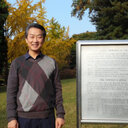Dual Role of Cyanidin-3-glucoside on the Differentiation of Bone Cells.
Kľúčové slová
Abstrakt
Cyanidin-3-glucoside (C3G) is one of the major components of anthocyanin, a water-soluble phytochemical. Recent studies demonstrated the chemopreventive and chemotherapeutic activities of C3G in various conditions, including cancer, although the precise effects of C3G on osteoclast and osteoblast differentiation remain unclear. Here, we investigated the role of C3G in the differentiation of bone-associated cells and its underlying mechanism. C3G inhibited receptor activator of nuclear factor kappa-B ligand (RANKL)-mediated osteoclast differentiation and formation in a dose-dependent manner and downregulated the expression of osteoclast differentiation marker genes. Pretreatment with C3G considerably reduced the induction of extracellular signal-regulated kinase, c-Jun N-terminal kinase, and p38 mitogen-activated kinases activation by RANKL in osteoclast precursor cells. Furthermore, C3G dramatically inhibited the expression of c-Fos and nuclear factor of activated T-cells, cytoplasmic 1, which are important transcription factors for osteoclast differentiation and activation. The formation of osteoclasts in coculture of bone marrow cells and calvaria-derived osteoblasts was also inhibited by C3G treatment, although the expression of macrophage colony-stimulating factor and RANKL (master factors for osteoclast differentiation and formation) and osteoprotegerin (a decoy receptor for RANKL) on osteoblasts was unaffected. The inhibitory effect of C3G on osteoclastogenesis is therefore targeted specifically to osteoclasts but not osteoblasts. Moreover, analysis of the expression levels of osteoblast differentiation marker genes and alizarin red staining showed that osteoblast differentiation and matrix formation increased after C3G treatment. Taken together, these results strongly suggest that C3G has a dual role in bone metabolism, as an effective inhibitor of osteoclast differentiation but also as an activator of osteoblast differentiation. Therefore, C3G may be used as a potent preventive or therapeutic agent for bone-related diseases, such as osteoporosis, rheumatoid arthritis, and periodontitis.


